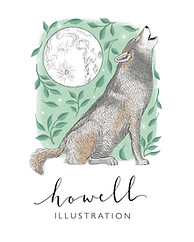How To Frame Your Art at Home
- Nicola Hawley

- Mar 27, 2024
- 4 min read
Updated: Apr 2, 2024
Do you sit with your art at home, unframed and unhung for years and years? Yeah, I've been there, but now this post is here to help you!
CONTENTS
Place your order - including online framing shop recommendation

There are many things to consider when you're framing art, and if you're like me and often can't afford a professional framer, then you probably leave unframed art lying about for years on end. Well, this post will be full of tips on how to frame your art at home.
STEP ONE: MEASURE YOUR ART
Okay, step one, perhaps the most fiddly: measure your art.
Most art from places like Etsy or Postery etc., will come in standard sizes, either the A sizes (A5, A4, A3 etc.) or in inches. But it is always best to measure the art first.
I would take a measurement in both inches and centimetres, as these appear to be interchangeable on most websites that offer frames, and if you don't have both written down it can get quite maddening.
STEP TWO: TO MOUNT OR NOT TO MOUNT
A mount is the piece of card that goes round the outside of artworks, and inside the frame.

They come in many colours, and can change the effect of the artwork quite quickly. Or you can choose not to mount at all. It all depends on the look you're going for and the artwork.
If your art is quite busy, with no or very little white space, and you want to give it a bit more breathing room, a mount is a good choice.
If your art has large areas of white space, or is very minimal, then go without a mount (see pic below).
If your art is a mess around the edges and you'd prefer it to look neater, go with a mount.
If you want your work to look more traditional, choose a thin or standard 2 inch mount.
If you want your work to look more contemporary, go with no mount (as below), or a wide, 3 inch mount like the one above.
I'd always steer away from coloured mounts and use either black or white - coloured mounts can make things look very cheap, very quickly. They're also really hard to match in your interior if you like to change things around.

I personally don't really like mounts. I think they're fussy and make framing more complicated and expensive than it needs to be, so I usually go without.
STEP THREE: DECIDE ON STYLE
There are so many frames to choose from now it's actually mind boggling. I always narrow my frame search down to my preferred style: thin, contemporary, wood (see pics above). It's how most of the things in my house are framed, so I like to keep a similar style throughout.
What would your preferred style be?
If contemporary, you could go for a thinner frame. A deeper frame can also look more contemporary. The one above has a depth (or rebate) of around 2.5cm.
If you want something slightly more vintage, then you can choose something a bit wider and more ornate. For example, the one below, which I found in an antique shop a long time ago now!

STEP FOUR: DECIDE ON A COLOUR
At this point, I always consider two things:
what will make the artwork stand out the most?
what colour goes best with where I'm putting the art?
I always put the priority on question one, because I think the artwork is the most important thing, but that does result in a rather eclectic framing style.
One thing I can tell you is that every time I've tried to match the decor before considering the art, I've been disappointed in the result. And then I've moved the art around and it didn't matter anyway!
If you want a standard look though, just choose one colour of frame perhaps per room. So you could have all black frames in the front room, all white in the kitchen. Etc.
STEP FIVE: PLACE YOUR ORDER
Here's where I'm going to narrow everything down. I'm going to recommend one place to get your frames. I've ordered many frames over the years, but this website has consistently had the best prices and nicest frames. It's also a really easy ordering process. (This post is not sponsored, I just hope it's helpful).
I use pictureframesexpress.co.uk.
You can search your preferred frames first. I find it helpful to list search results by first colour/material and then width, as I always prefer a thinner frame. When you've found one you like, you can click on it and use their designer tool to get any size made.
The designer tool is really easy, you write in the size of the picture, select a mount (or no mount), then click next and next and voila, your frame is on its way to you with everything you need to hang it.
Once it gets to you, give the glass a clean with newspaper and glass cleaner, for which I have a great recipe here) make sure all the liquid is off then pop the art in (and don't forget to take the protective plastic off the glass).
The two little screws go on the back of the frame at the same height, on the right and left hand side. Screw them half way between the top and centre of the frame. Then add the string around these and you're good to go.
I hope this has helped you to get a move on and frame your art! Leave a comment below if I've missed anything or you want to know anything else!
As always, thank you for reading.
Nx




Comments